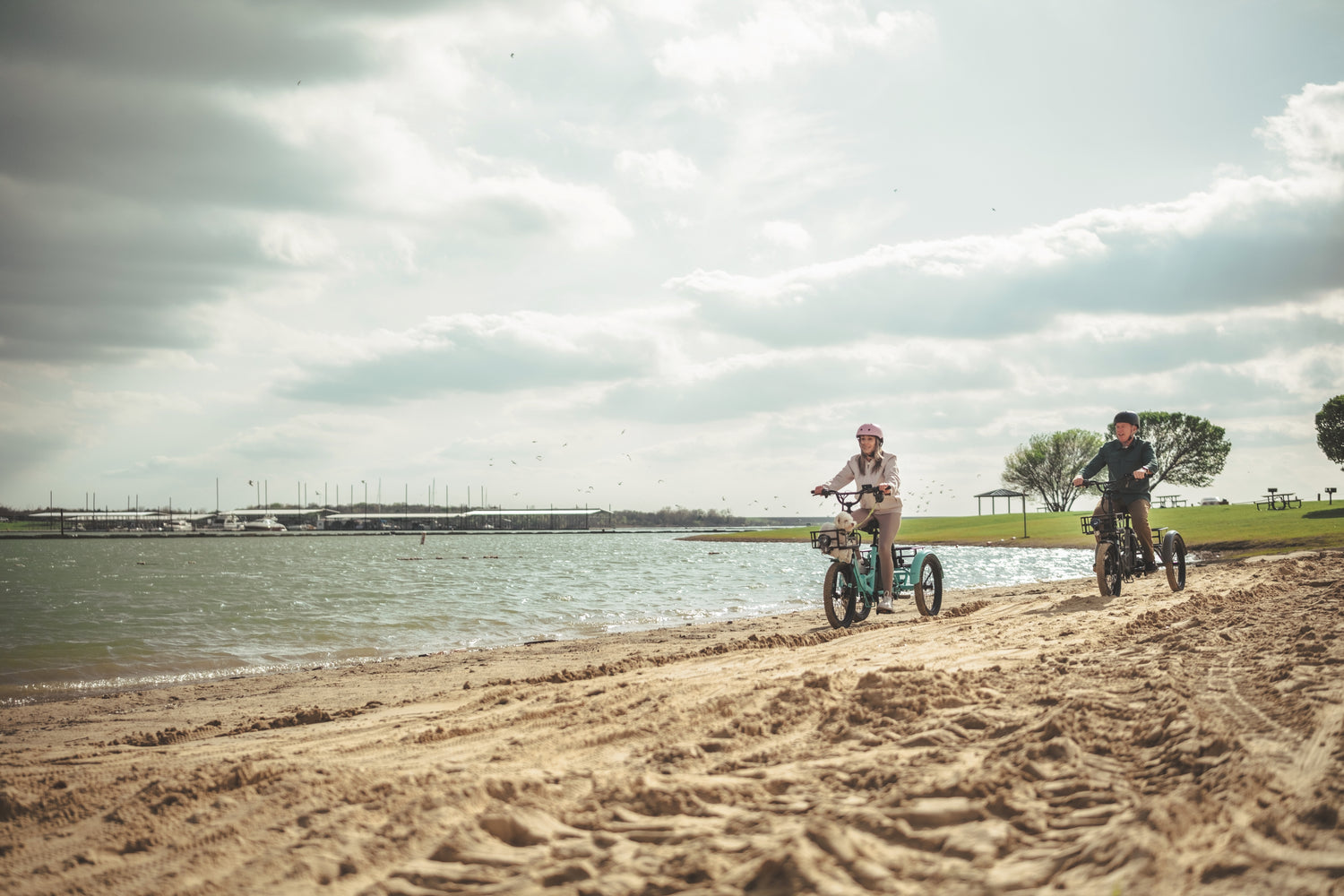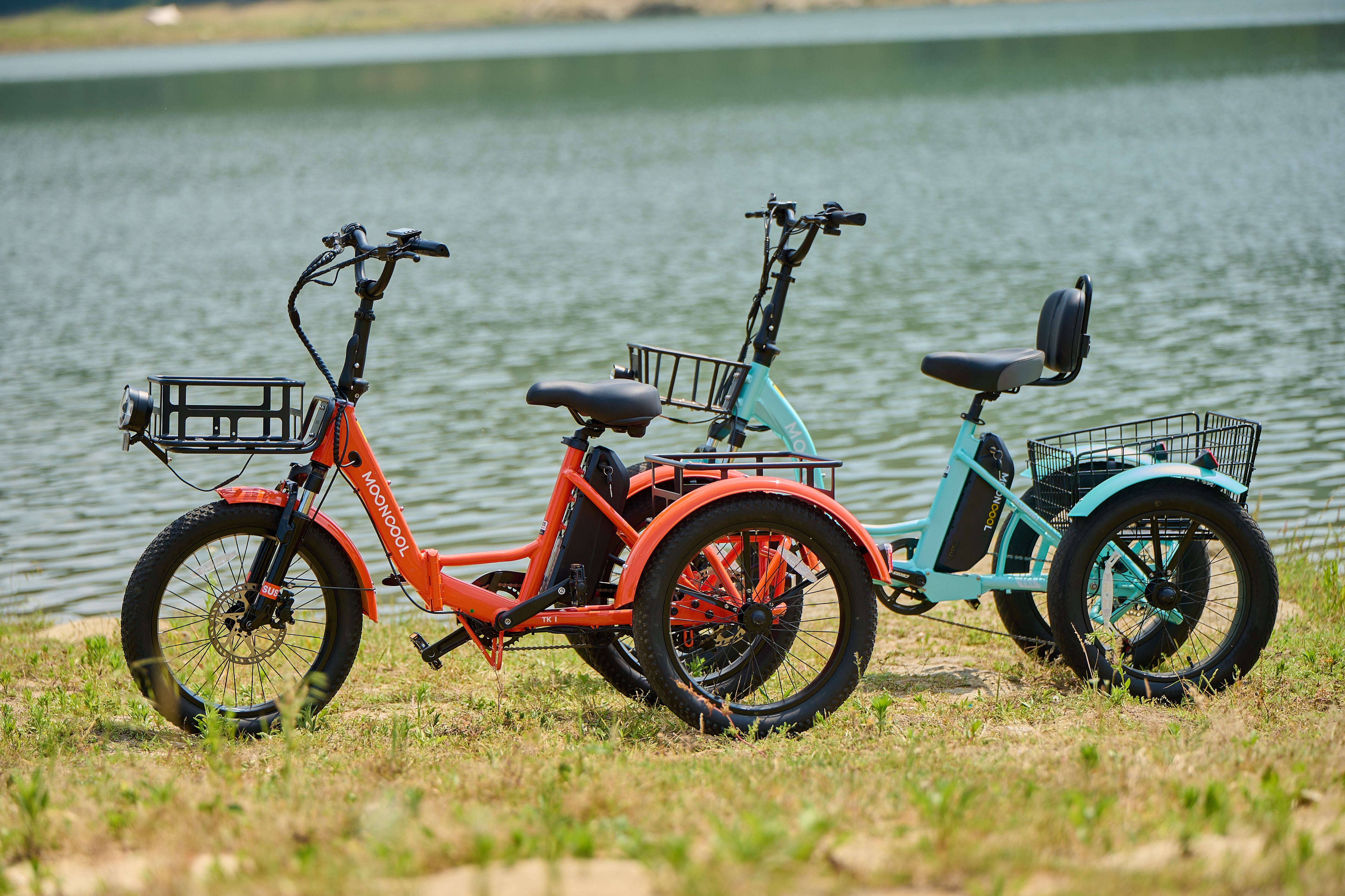Electric trikes are excellent for making short trips, running errands, and socializing. They are also incredibly good fun to ride, but their performance varies significantly depending on the terrain you're riding on. In this guide, we'll go into the influence of terrain on trike performance and give you lots of tips for riding on different surfaces.
The Influence of Terrain on Trike Performance
Some electric trikes are explicitly designed for use on paved roads. However, there are models that can be ridden on a variety of terrain types, at least to a point. Each terrain type comes with its own set of challenges, and understanding them will help you get the most out of your trike and stay safe.
Paved Surfaces
Let's start with the most common surface electric trikes roll on. Paved surfaces are the easiest to navigate, but there are a few things you should know about riding on them.
Paved surfaces provide a smooth ride quality and make it easy to maintain your speed. However, when riding through urban areas, you'll have to navigate potholes, curbs, vehicles, and pedestrians. This is manageable if you stay alert.

Tips For Riding On Paved Surfaces:
- Use the higher assistance levels to get you up to speed when appropriate. This will allow you to take advantage of the smooth roads and give you momentum when approaching uphill climbs.
- Adjust your riding style in bad weather conditions. Observing the road ahead and braking earlier than usual is much safer.
- Ride smoothly by avoiding heavy braking and acceleration. This will enable maximum range from your electric trike battery.
Gravel Paths And Trails
Sometimes, you may come across gravel paths and dirt trails. Mild off-road riding shouldn't trouble you too much, but there's a technique for riding effectively and safely.
You should expect loose surfaces to negatively affect traction. The surface will also be rougher, so the ride quality will be less comfortable.

Tips For Riding On Loose Surfaces:
- Ride at lower speeds to improve your control and safety on loose surfaces.
- If you know you'll ride on loose surfaces often, choose your electric trike accordingly. Look for electric trikes with fat tires and suspension. These components improve traction and make your rides more comfortable. Additionally, you may benefit from a trike with a more powerful motor, as off-road trails are usually more hilly.
- Don't change direction too abruptly. By riding smoothly, you won't tip over or lose traction.
Mountain Bike Trails
We don't recommend riding your electric trike on a mountain bike trail unless it has been specifically designed for the job. Mountain bike trails are incredibly challenging for electric trikes. They are narrow, littered with obstacles, such as rocks, roots, and jumps, and can be dangerously steep.
Tips For Riding On Mountain Bike Trails:
- Research the trails you intend to ride to ensure they are suitable for your electric trike.
- Don't ride any electric trike on a mountain bike trail. Most electric trikes are not built to cope with the challenges posed by proper mountain bike trails. A few disabled mountain bikers use adaptive electric mountain trikes, but these are specialist pieces of equipment.
Sandy Surfaces
People who live in coastal areas may want to ride their electric trikes on the beach. This is possible, but only under certain circumstances. Deep and dry sand is challenging to ride through, and it's easy for your electric trike to get bogged down to the point it cannot move. Sand also causes traction issues, so you may wheel spin or lose control easily.
Deep sand can strain the motor, making it work harder. This, combined with hot weather, can cause your electric trike to overheat and wear out prematurely.

Tips For Riding On Sand:
- If you want to ride on the beach, choose a fat tire electric trike. These have high-volume tires that stay on top of the sand and give you lots of traction.
- Choose a trike with a powerful motor, as it will be able to cope with the challenging conditions better than lower-powered models.
- Lowering your tire pressures slightly will increase the contact patch with the sand. This will improve traction, which will help you pedal along the beach.
- If possible, ride on firm, wet sand, as it is easier for your tires to roll on.
- Check your motor temperature periodically and avoid long rides in deep sand.
- Wash your electric trike after riding on sand. Pay close attention to the chain and relubricate it. If any sand is left on the chain, it will wear out the drivetrain very quickly.
Wet Mud
Riding an electric trike on wet mud can be fun but more challenging. The first hazard you'll encounter when riding on wet mud is reduced traction, which can cause you to lose control. The next issue with wet mud is the increased resistance, making it harder to pedal, even with an electric motor.
Tips For Riding On Wet Mud:
- It's best to take it easy when riding on wet mud. Slower speeds help you stay in control, especially when cornering and stopping.
- Some riders fit mud tires to their electric trikes in the winter. These tires have excellent mud-clearing capabilities and provide extra grip.
- Fit your electric trike with mudguards to keep you clean while riding.
- Buying a fat tire electric trike is a good idea if your regular routes consist of muddy paths.
- Always wash your electric trike after riding in the mud. If you leave it dirty for extended periods, the frame and components may rust. Additionally, relubricate your chain after cleaning it thoroughly to slow down wear and tear.
Final Thoughts On Navigating Different Terrains With Electric Trikes
As you can see, navigating different terrains with electric trikes takes a little understanding to do properly. However, if you adapt your riding style, you can overcome most issues associated with different surfaces. But you should choose the best trike that suits the terrain you'll spend most of your time riding. On top of this, prepare your trike if possible and wash and maintain it to ensure it lasts a long time.




Leave a Comment
This site is protected by hCaptcha and the hCaptcha Privacy Policy and Terms of Service apply.